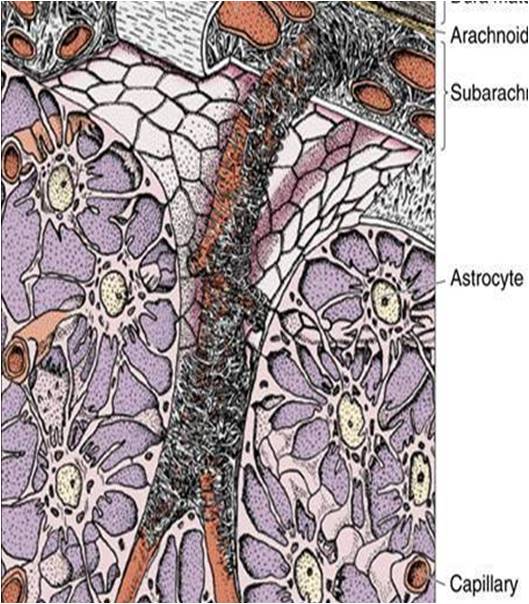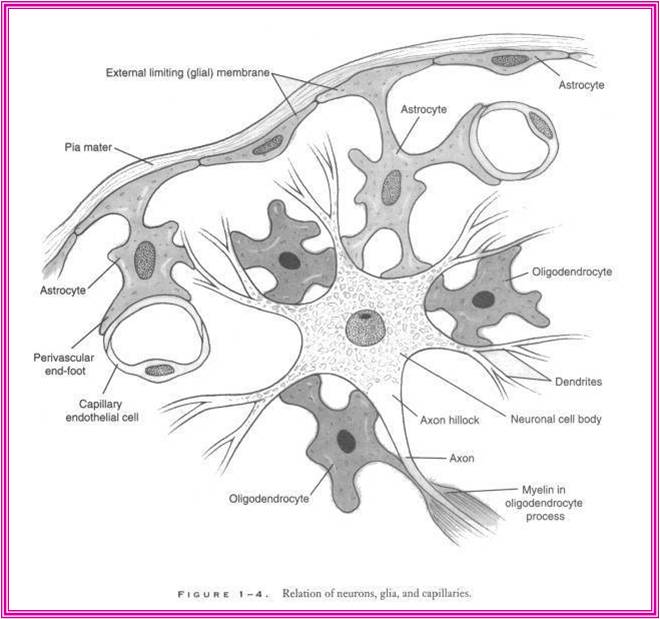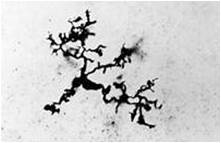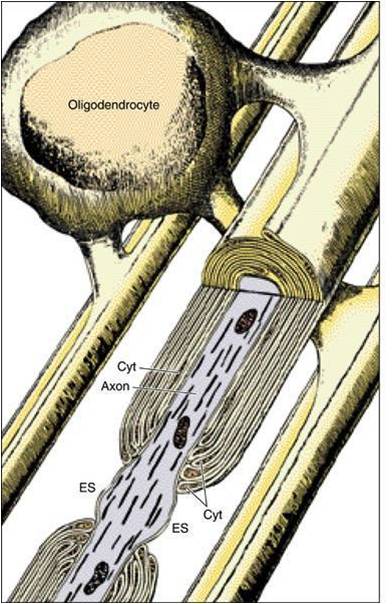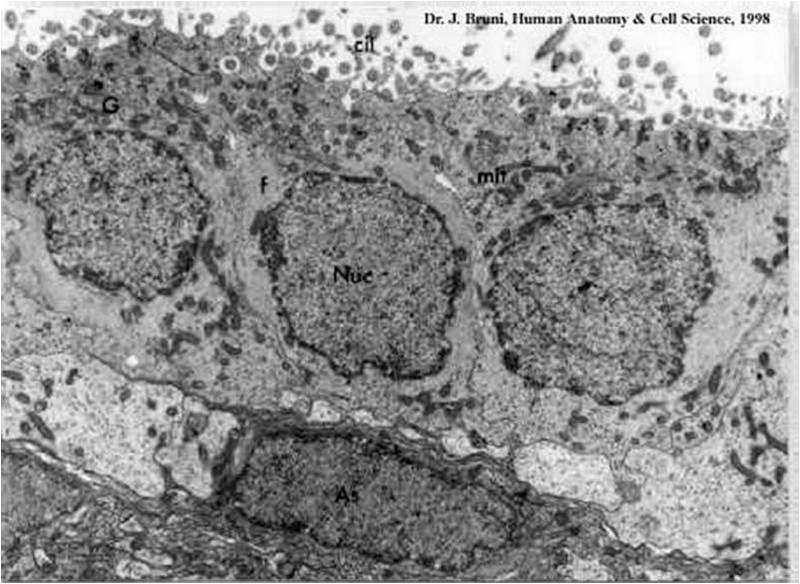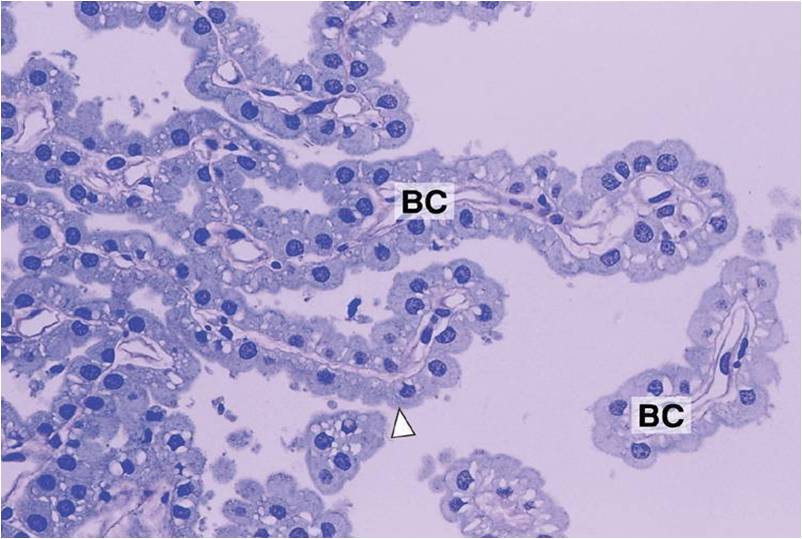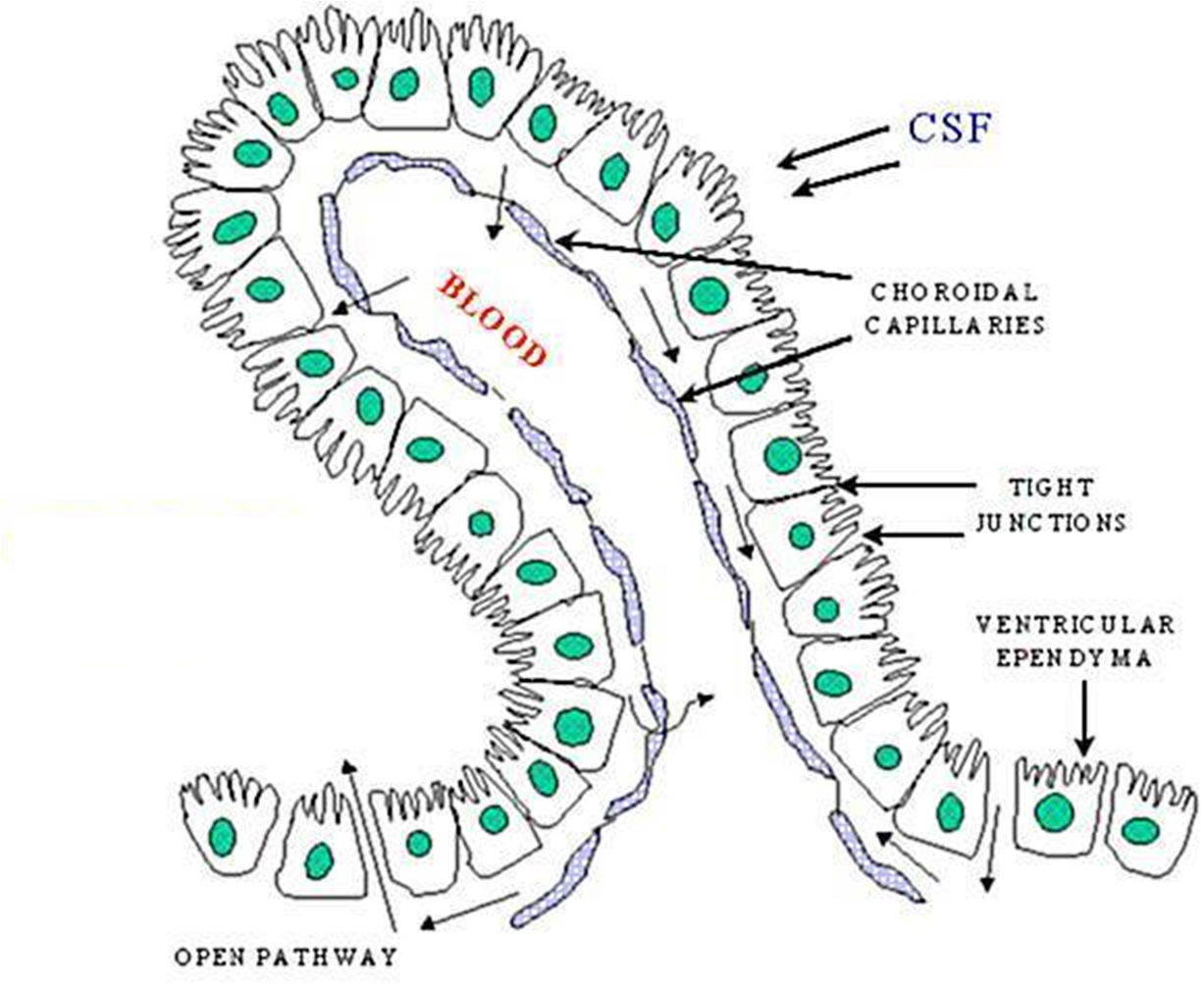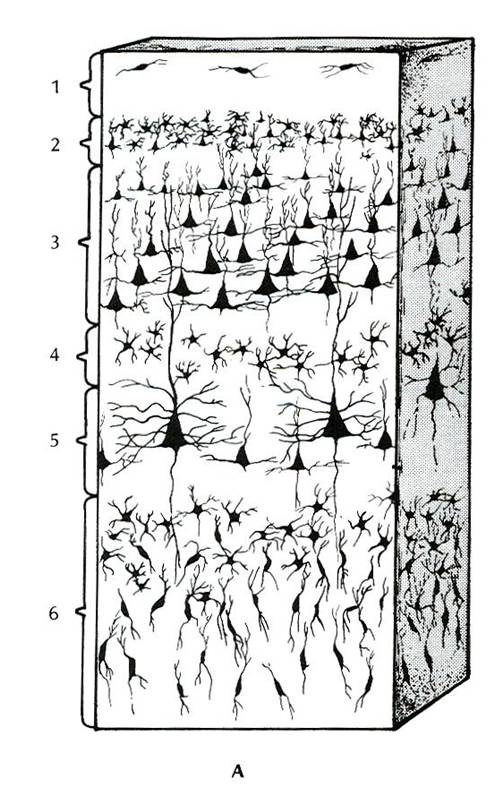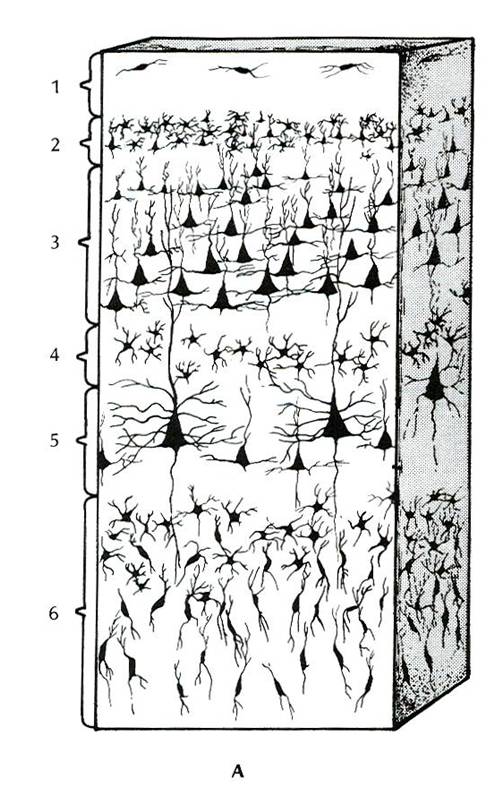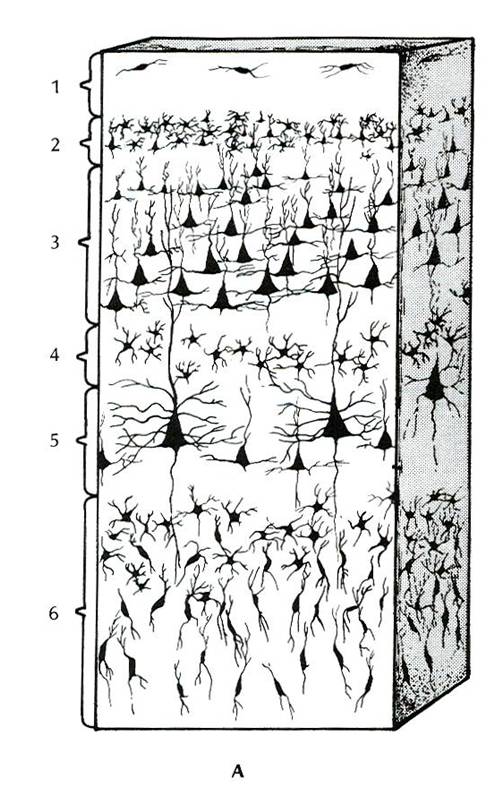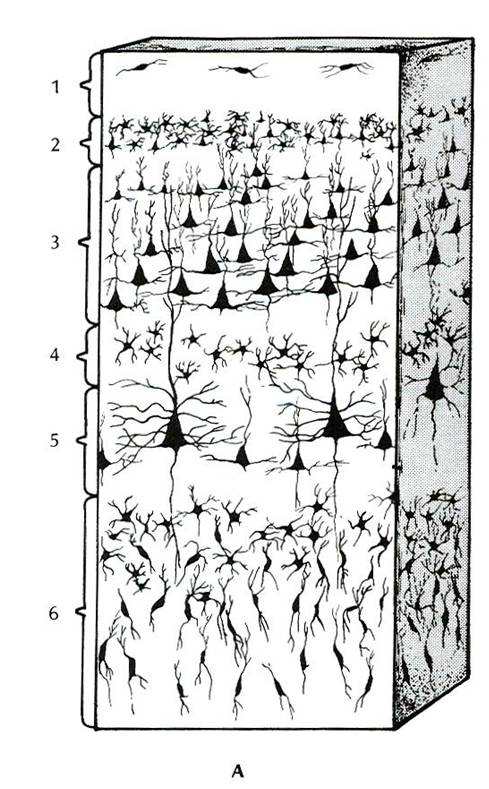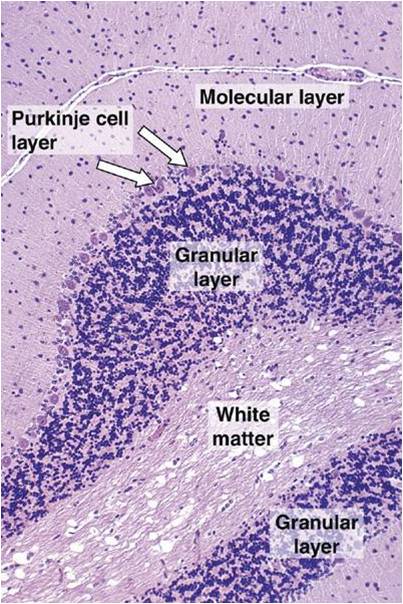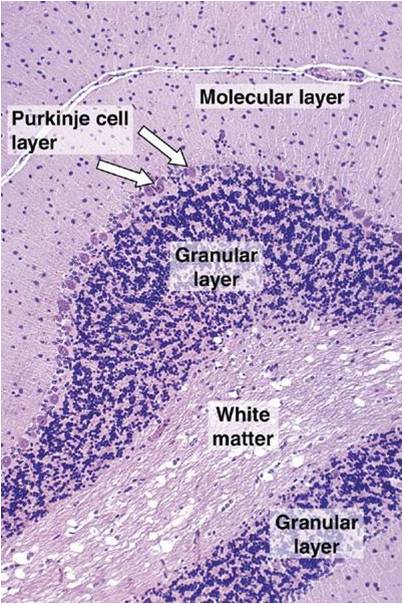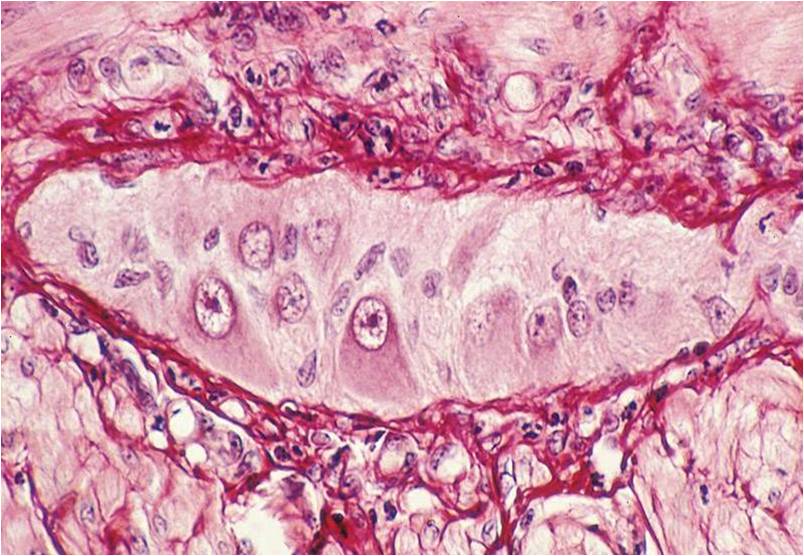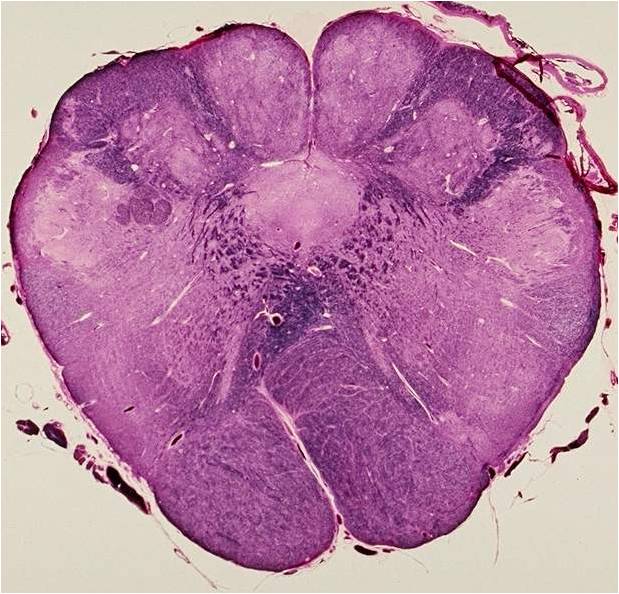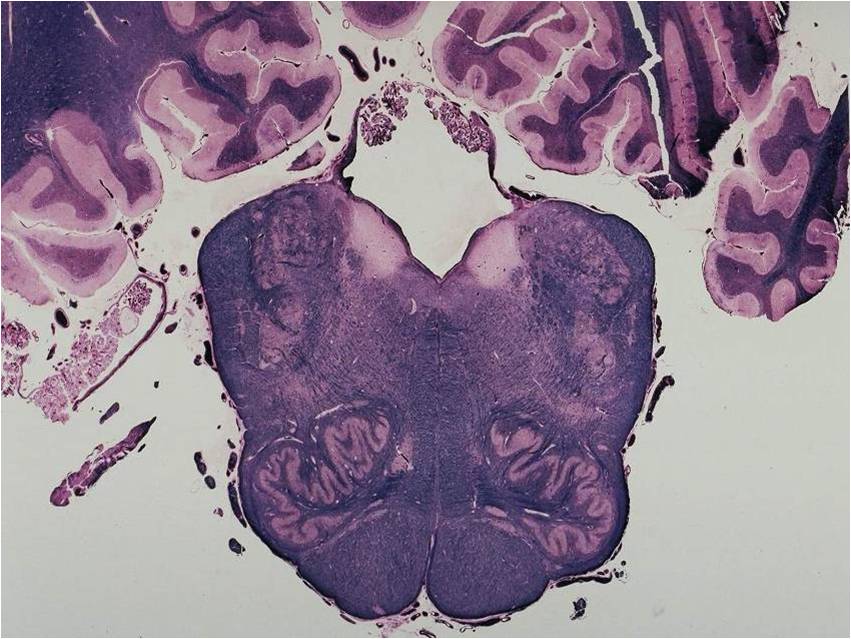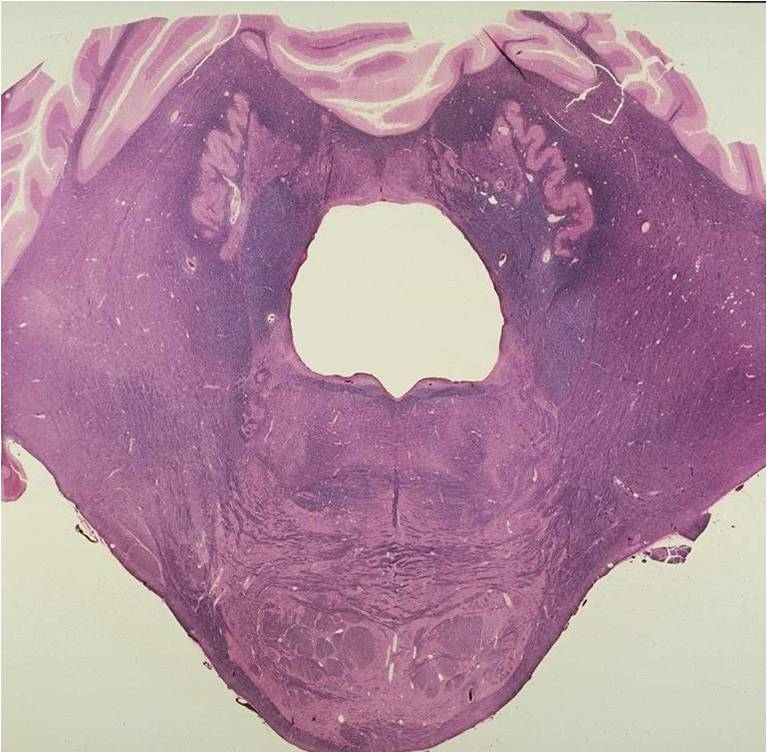Central Nervous System Histology (Msq Drill 263)
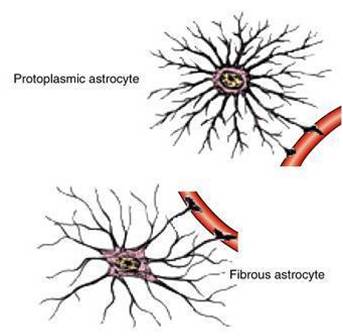
Medicalschoolquizzes. Com
- 1.
The principle and the functional cell of the nervous system is the
- A.
Astrocyte
- B.
Glial cells
- C.
Neuron
- D.
Caudate nucleus
Correct Answer
C. Neuron -
- 2.
What is the metabolic center of the neuron?
- A.
Nucleus
- B.
Nucleolus
- C.
Perikaryon
- D.
Axon
- E.
Hillock
Correct Answer
C. Perikaryon -
- 3.
What structure is normally filled with euchromatin?
- A.
Nucleus
- B.
Axon
- C.
Dendrite
- D.
Hillock
Correct Answer
A. Nucleus -
- 4.
If the nerve cell body is damaged can the cell regenerate?
- A.
Yes
- B.
No
Correct Answer
B. NoExplanation
It can regenerate if the damage is to the axon.Rate this question:
-
- 5.
The areas of the perikaryon that stain basic and are full of rER and free ribosomes are called
- A.
Basal bodies
- B.
Inclusion bodies
- C.
Prominent bodies
- D.
Nissl bodies
- E.
Chromatin
Correct Answer
D. Nissl bodies -
- 6.
Do dendrites also contain nissl bodies and mitochondria?
- A.
Yes
- B.
No
Correct Answer
A. YesExplanation
Yes, they also contain microtubules and microfilaments.Rate this question:
-
- 7.
Do axons contain nissl bodies and golgi bodies?
- A.
Yes
- B.
No
Correct Answer
B. NoExplanation
But they do contain mitochondria, microfilaments and microtubules.Rate this question:
-
- 8.
_____________ transports molecules (nutrients, neurotransmitters) and organelles (mitochondria, neurofilaments) from cell body to distal end of axon.
- A.
Retrograde transport
- B.
Anterograde transport
Correct Answer
B. Anterograde transport -
- 9.
What is the principle cell found in sensory ganglia?
- A.
Bipolar
- B.
Unipolar
- C.
Pseudounipolar
- D.
Multipolar
Correct Answer
C. PseudounipolarExplanation
This cell has one process that comes from the cell body that bifurcates forming a T-shape.Rate this question:
-
- 10.
___________ neurons are located in the retina, olfactory epithelium and form the ganglia of vestibulocochlear nerve
- A.
Bipolar
- B.
Unipolar
- C.
Psuedounipolar
- D.
Multipolar
Correct Answer
A. Bipolar -
- 11.
What is the most common type of neuron?
- A.
Unipolar
- B.
Bipolar
- C.
Psuedouipolar
- D.
Multipolar
Correct Answer
D. Multipolar -
- 12.
In the CNS and PNS what separates and aggregrates neurons?
- A.
Astrocytes
- B.
Glial cells
- C.
Myelin fibers
- D.
Gyri
Correct Answer
B. Glial cells -
- 13.
The following are all examples of ___________ ____________: astrocytes, schwann cells, microglial cells, oligodendrocytes & capsular (satellite cells)
- A.
Cells in the PNS
- B.
Neuroglia or glial cells
- C.
Cells found in the cerebral cortex only
- D.
Cells found in the ventral horn
Correct Answer
B. Neuroglia or glial cellsExplanation
These are the supporting cells of the nervous system.Rate this question:
-
- 14.
In the CNS, glial cells are divided into how many types?
- A.
1
- B.
2
- C.
3
- D.
4
- E.
5
Correct Answer
D. 4Explanation
These include astroglia, microglia, oligodendrocytes and epindymal cells.Rate this question:
-
- 15.
What are the two types of astroglial cells: Check the two that apply.
- A.
Protoplasmic astrocytes in the gray matter
- B.
Protoplasmic astrocytes in the white matter
- C.
Fibrous astrocytes in the gray matter
- D.
Fibrous astrocytes in the white matter
Correct Answer(s)
A. Protoplasmic astrocytes in the gray matter
D. Fibrous astrocytes in the white matter -
- 16.
These cells are involved in selectively isolating what areas between nerve cells?
- A.
Areas where there is no myelination
- B.
Areas where the blod brain barrier does not exist
- C.
Areas where synaptic exchanges occur
- D.
Areas where several neuroglia congregate
Correct Answer
C. Areas where synaptic exchanges occurExplanation
They also have supportive, reparative and nutritive roles.Rate this question:
-
- 17.
Astrocyte processes terminate as "end feet" near blood vessels and at the _______ _________ of the CNS.
- A.
Most medial
- B.
External surface
- C.
Most caudal
- D.
Unused portion
Correct Answer
B. External surface -
- 18.
What is the protective covering formed by astrocytes around the spinal cord and brain called? Check all that apply.
- A.
Internal limiting membrane
- B.
External limiting membrane
- C.
Basement mebrane
- D.
Glial membrane
Correct Answer(s)
B. External limiting membrane
D. Glial membrane -
- 19.
Do astrocytes also form part of the blood brain barrier?
- A.
Yes
- B.
No
Correct Answer
A. YesExplanation
Inotherwords they are involved in regulating the passage of materials from blood to CNS.Rate this question:
-
- 20.
After CNS injury what cells are involved in scar formation?
- A.
Astrocytes
- B.
Oligodendrocytes
- C.
Epindymal cells
- D.
Microglial cells
Correct Answer
A. Astrocytes -
- 21.
Are astrocytes involved in removing neurotransmitters from synaptic clefts?
- A.
Yes
- B.
No
Correct Answer
A. YesExplanation
They are also involved in regulation of electrolyte balance in the CNS and for producing trophic factors necessary for neuronal survival.Rate this question:
-
- 22.
Of the four neuroglial cells, which cell type (shown below) is phagocytic and is of mesodermal origin?
- A.
Astrocytes
- B.
Epindymal cells
- C.
Oligodendrocytes
- D.
Microglial cells
Correct Answer
D. Microglial cells -
- 23.
Is this cell type involved in the formation of myelin, or maintenance of myelin, or both in the CNS.?
- A.
Formation
- B.
Maintenance
- C.
Both
- D.
None of the above
Correct Answer
C. Both -
- 24.
Epindymal cells (shown below) are derived from:-
- A.
Neural crest cells
- B.
Cells lining the neural tube
- C.
Cells from the cerebral cortex
- D.
Cells derived from the ectoderm
Correct Answer
B. Cells lining the neural tubeExplanation
They form an epithelial sheet that covers the internal cavities such as the ventricular system of the brain and spinal cord.Rate this question:
-
- 25.
What cell type lines the ventricles of the brain?
- A.
Microglial cells
- B.
Epindymal cells
- C.
Neuroepithelial cells
- D.
Astroglial cells
Correct Answer
B. Epindymal cellsExplanation
Read explanation for question 24 for a full explanation.Rate this question:
-
- 26.
Do epindymal cells produce CSF or are they responsible for reabsorption of CSF?
- A.
They produce CSF
- B.
They reabsorb CSF
- C.
They produce and reabsorb CSF
- D.
They do neither
Correct Answer
A. They produce CSFExplanation
The invaginated folds of epyndimal like epithelial cells are responsible for the production of CSF.Rate this question:
-
- 27.
Does this structure play any role in CSF production?
- A.
Yes
- B.
No
Correct Answer
A. YesExplanation
yes, this is part of the choroid plexus.Rate this question:
-
- 28.
In the CNS, myelin, a lipoprotein is produced as an elaboration of:-
- A.
Multiple schwann cell aggregations
- B.
Microglial and astroglial aggregations
- C.
There is no myelination in the CNS
- D.
Oligodendrocyte plasmalema
Correct Answer
D. Oligodendrocyte plasmalema -
- 29.
The schwann cell produces myelin in the PNS or CNS?
- A.
PNS
- B.
CNS
Correct Answer
A. PNS -
- 30.
In the CNS oligondendrocytes send out many processes from the cell body, each of which is capable of myelinating how many segments of myelin around an axon?
- A.
0
- B.
1
- C.
2
- D.
3
Correct Answer
B. 1Explanation
One oligodendrocyte forms myelin around a variable number of axons - up to 40 or 50.Rate this question:
-
- 31.
A schwann cell usually associates with how many axons?
- A.
0
- B.
1
- C.
2
- D.
3
Correct Answer
B. 1 -
- 32.
Which of the following are central "gray regions" in which you will find functional groupings of cells bodies called "nuclei"? Check all that apply.
- A.
Medulla
- B.
Gray regions of the spinal cord
- C.
Cerebellar cortex
- D.
Cerebral cortex
Correct Answer(s)
A. Medulla
B. Gray regions of the spinal cord
C. Cerebellar cortex
D. Cerebral cortex -
- 33.
Do groupings of cell bodies called "nuclei" in the CNS have any anatomical conections?
- A.
Yes
- B.
No
Correct Answer
A. YesExplanation
they are topographicalRate this question:
-
- 34.
This is a cross section of the cerebral cortex. What is layer no 1?
- A.
External pyrimidal layer
- B.
External granular layer
- C.
Molecular layer
- D.
Multiform layer
- E.
Internal pyrimidal layer
Correct Answer
C. Molecular layer -
- 35.
What is layer no 2?
- A.
External pyrimidal layer
- B.
External granular layer
- C.
Internal pyrimidal layer
- D.
Internal granular layer
- E.
Multiform layer
Correct Answer
B. External granular layer -
- 36.
What is layer no 5?
- A.
Internal pyrimidal layer
- B.
Internal granular layer
- C.
Multiform layer
- D.
External granular layer
- E.
Molecular layer
Correct Answer
A. Internal pyrimidal layer -
- 37.
What is layer no 4? For the correct sequence for all the layers please read the explanation for the answer that is included.
- A.
Internal pyrimidal layer
- B.
Internal granular layer
- C.
Multiform layer
- D.
Molecular layer
Correct Answer
B. Internal granular layerExplanation
1. Molecular layer 2. external granular layer 3.external pyramidal layer 4. internal granular layer 5. internal pyramidal layer 6. multiform layerRate this question:
-
- 38.
Are the purkinje cells shown here the same purkinje cells that are found in the heart?
- A.
Yes
- B.
No
Correct Answer
B. No -
- 39.
Is this taken from the cerebral cortex or cerebellar cortex?
- A.
Cerebral
- B.
Cerebellar
Correct Answer
B. Cerebellar -
- 40.
Where would you find this structure?
- A.
In the PNS, this is a ganglion
- B.
In the CNS, this is a ganglion
Correct Answer
A. In the PNS, this is a ganglion -
- 41.
Are there any cell bodies in white matter?
- A.
Yes
- B.
No
Correct Answer
A. YesExplanation
Your will find cell bodies of oligodendrocytes and astrocytes.Rate this question:
-
- 42.
White matter is arranged in tracts called:- (check all that apply.)
- A.
Bundles
- B.
Fasciculli
- C.
Lemnisci
- D.
Pyramids
- E.
Nuclei
Correct Answer(s)
B. Fasciculli
C. Lemnisci -
- 43.
A tract is a group of axons. Do all these axons have to have the same origin, termination and course. Do they all have to transmit the same information?
- A.
Yes
- B.
No
Correct Answer
A. YesExplanation
this is the definition of a tract.Rate this question:
-
- 44.
A series of neurons designed to cary a specific type of information from one side to the other is known as a:
- A.
Tract
- B.
Pyramid
- C.
Highway
- D.
Pathway
- E.
Bundle
Correct Answer
D. PathwayExplanation
Remember more than one neuron. This is different from a tract in which it was only one neuron.Rate this question:
-
- 45.
Name the structure
- A.
Pons
- B.
Open medulla
- C.
Closed medulla
- D.
Midbrain
- E.
Cerebellum
Correct Answer
C. Closed medullaExplanation
AKA the caudal medulla. The closed medualla has the spinal canal in the middle of it.Rate this question:
-
- 46.
Name the structure.
- A.
Pons
- B.
Open medulla
- C.
Closed medulla
- D.
Midbrain
- E.
Cerebellum
Correct Answer
B. Open medullaExplanation
The open medulla opens up into the 4th ventrincle. Note the sulcus limitans that separates the alar plate from the basal plate. The alar plate is the light area next to the opening and the basal plate is more medial and stains darker. The alar plate contains the nuclei.Rate this question:
-
- 47.
This is the back part of which structure?
- A.
Pons
- B.
Medulla
- C.
Midbrain
Correct Answer
A. PonsExplanation
the opening is the 4th ventricle.Rate this question:
-
- 48.
What is the opening in the middle of the last structure?
- A.
4th ventricle
- B.
Cerebral aqueduct
- C.
Foramen magnum
Correct Answer
B. Cerebral aqueduct -
Quiz Review Timeline +
Our quizzes are rigorously reviewed, monitored and continuously updated by our expert board to maintain accuracy, relevance, and timeliness.
-
Current Version
-
Jul 12, 2022Quiz Edited by
ProProfs Editorial Team -
Feb 21, 2010Quiz Created by
 Back to top
Back to top



